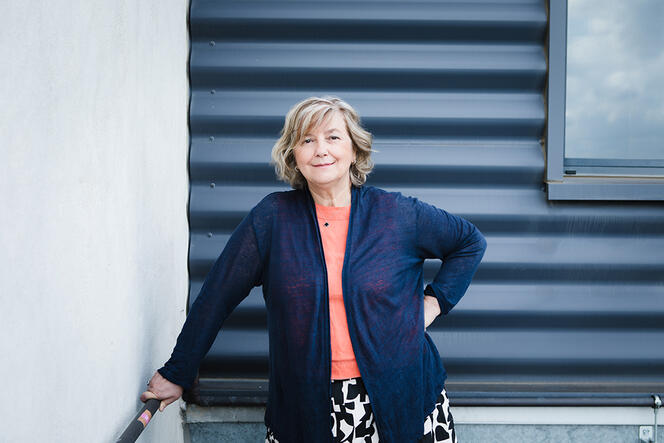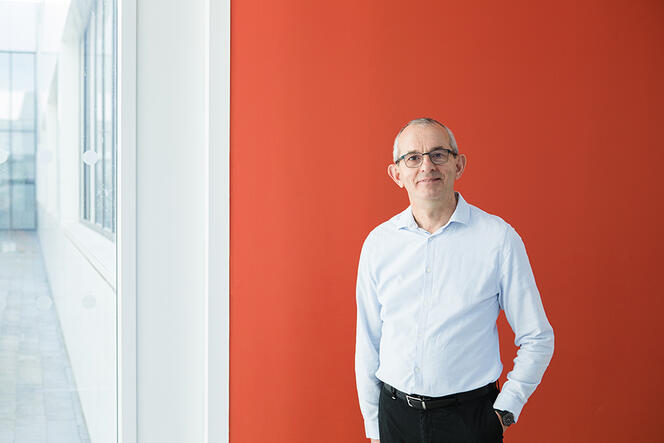You are here
Four CNRS innovators honoured

Patricia Rousselle, molecules for skin regeneration
With more than ten industrial partnerships and eleven patents, Patricia Rousselle definitely has innovation and research in her blood. A CNRS research professor at the of Tissue Biology and Therapeutic Engineering Laboratory (LBTI)1, she is a pharmacobiologist specialising in skin healing and regeneration, which resulted in collaborations with the Laboratoires d’Anjou, BASF, Symatèse, 3-D Matrix, Dior, Chanel, Native, and Nagase. “I make sure I develop genuine partnerships with a view to co-creation,” Rousselle points out. “Innovation finds its source in fundamental research, based on the exploration of new and original scientific avenues.”



Rousselle studies the dialogue between cells and their micro-environment, which is rich in proteins whose nature and organisation influence the functioning of skin cells, including when it becomes pathological. Setting out from basic research, she proposes solutions that range from post-surgical healing and the treatment of chronic wounds to the fight against skin ageing. Rousselle has for example synthesised a biomimetic molecule that facilitates tissue regeneration, and is now used in the Cébélia range of healing balms sold by the Laboratoires d’Anjou.
Marc Antonini, using DNA to store data
Marc Antonini, who holds thirteen patents, has contributed to innovation ever since his PhD. The initial research of this expert in data compression was included in the JPEG 2000 standard used across the globe. He then collaborated with the CNES, where he developed an on-board coding system for the Pléiades satellite constellation.
Antonini is currently a CNRS research professor at the Sophia Antipolis Laboratory for Computer Science, Signals, and Systems (I3S)2, where he leads the MediaCoding team, which cooperates with numerous industrial actors. His research led him to co-found the start-up Cintoo, which focuses on the capture and visualisation of 3D point clouds from LiDAR scanners, in particular for industry and construction. The company, which today boasts a forty-strong workforce and a second office in the United States, successfully completed three fundraising campaigns for a total of nine million euros.



Since then, Antonini has turned to a revolutionary technology. “My research is geared towards a memory system based on synthetic DNA that is reliable, automated, and will be operational by the 2030s.” For that purpose, Antonini co-founded the start-up PearCode, whose patented algorithm facilitates the coding and decoding of binary information on DNA. He also manages the MoleculArXiv PEPR, endowed with a budget of twenty million euros over seven years, and took part in the OligoArchive European programme. Finally, Antonini leads the international team that develops JPEG DNA, an image compression standard suitable for DNA.
Jacques Gierak, controlling ions for space propulsion and nanofabrication
From the initial experimental phases to final instrumentation, Jacques Gierak is present at every step of innovation. This CNRS research engineer, who is also responsible for the instrumentation and ion sources platform at the Centre for Nanoscience and Nanotechnology (C2N)3, is recognised worldwide for conceiving sources for focused ion beams. “Thanks to the CNRS, I am fortunate to be able to go off the beaten path, and to take advantage of the C2N’s exceptional equipment.”



His know-how concerning extremely high-performance ion sources has given rise to collaborations with major companies in his field. Gierak has also worked with the CNES and Airbus Defence and Space on the projection of fast ions for space propulsion. His ability to overcome technological obstacles led to the creation of the start-up ION-X, whose HALO-100X thruster will equip the next satellite for the Edison Mission of the European Space Agency (ESA).
Gierak has also worked on focused ion beams (FIB) suitable for nanofabrication. In collaboration with the German company Raith Nanofabrication GmbH, he developed the FIB Nanowriter, which can structure the surfaces of advanced materials such as graphene, magnetic films, and semiconductors. The tools developed by Gierak are based on a number of his patents, and have broken multiple world records for performance. Their reliability increases the speed of execution, all while offering nanometric precision.
Claire Hellio, developing environmentally-friendly products using natural molecules
Claire Hellio is a professor at the UBO University in Brittany, and a member of the Laboratory of Environmental Marine Sciences (LEMAR) 4. She also heads the Biodimar bioprospecting platform, where industrial players set forth their issues and R&D requirements, for which researchers subsequently provide bioinspired solutions. This collaboration went so far as to establish the BiotechALg joint laboratory in partnership with the company Green Sea, the European leader in the production of microalgae.



At the interface between biology, chemistry, and environmental science, Claire Hellio finds applications for marine biomass, especially algae and microorganisms. “I have always lived by the seaside. I developed a keen interest in its study and protection ever since I was a young child.” A champion of biomimetic and green chemistry approaches, she extracts active compounds to develop innovative products. Most of them are used for antifouling coatings – which protect the hulls of ships from the accumulation of algae and molluscs – as well as preservatives and antioxidants for the cosmetics industry.
Experienced in technology transfer, Hellio has secured 2.5 million euros of funding for her industrial partnerships since joining the LEMAR, 1.5 million of which as lead coordinator. This represents fourteen projects with industry since 2015.
Explore more
Author
A graduate from the School of Journalism in Lille, Martin Koppe has worked for a number of publications including Dossiers d’archéologie, Science et Vie Junior and La Recherche, as well the website Maxisciences.com. He also holds degrees in art history, archaeometry, and epistemology.







